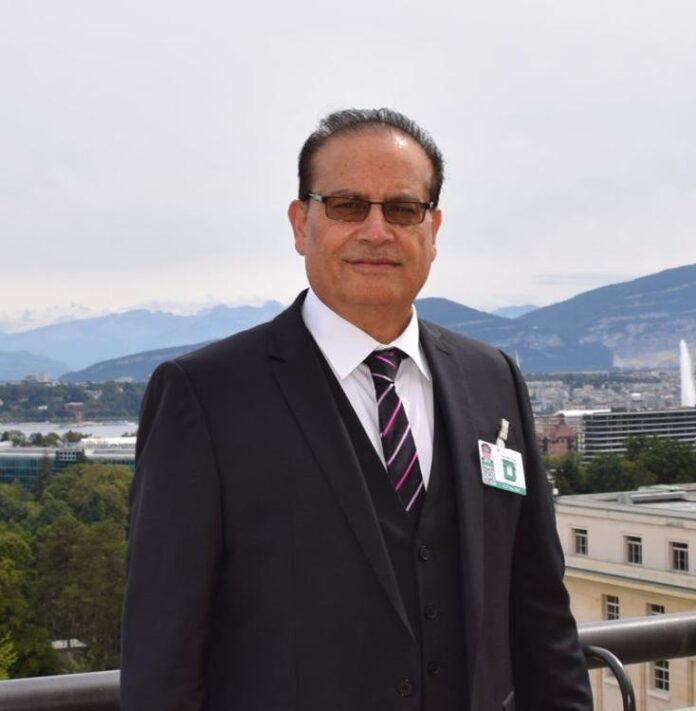By: Qamar Bashir
Upon perusing the Special Investment Facilitation Council (SIFC)’s website, one encounters an impressive brochure detailing the Green Pakistan initiative. The brochure boasts a professional design, featuring easily readable text accompanied by high-definition images showcasing various facets of the GPI, painting an impressive picture.
The initiative commences with a vision statement, which articulates its overarching goal: “Ensure food security and optimize agricultural production in Pakistan through innovative technologies and sustainable, precision-driven agricultural practices based on the agro-ecological potential of the land, while safeguarding the well-being of rural communities and preserving the environment.”
Furthermore, the brochure outlines the mechanism to achieve this mission, emphasizing the utilization of innovative technologies and sustainable, precision-driven agricultural practices tailored to Pakistan’s agro-ecological potential. It underscores the importance of prioritizing the welfare of rural communities and the conservation of the environment in the pursuit of food security and agricultural optimization.
In an effort to attract investors, the brochure leverages Pakistan’s diverse climate zones and vast land resources, encompassing a total of 79.6 million hectares. Within this expanse, 24.1 million hectares are cultivated, with an additional 9.1 million hectares available for agriculture, and 22.4 million hectares designated for range use. Through strategic marketing, smart business propositions are being presented to potential investors, promising enticing returns on investment. These plans aim to catalyze a transformation in Pakistan’s agriculture, livestock, and afforestation sectors by deploying state-of-the-art machinery and cutting-edge digital technologies. The objective is to transition to modern mechanisms, maximizing output, and unlocking Pakistan’s immense agricultural potential.
But what it does not tell is that Pakistan is Water scarce country facing a frightening situation. The country ranks 14 among the 17 ‘extremely high water risk’ countries of the world, a list that includes hot and dry countries like Israel, Lebanon, Jordan, Iran and Saudi Arabia.
It also does not factor in the 1991 Water Accord, canal water allocation among provinces based on a baseline volume of 144.8 billion cubic feet (BCF). 48% of this water is allocated to Punjab, 42% to Sindh, 7 percent to Khyber Pakhtunkhwa, and 3 percent to Balochistan.
The brochure was also silent about the fact that Pakistan is already facing climate-related threats to water resources as is evident from the change in monsoon patterns, receding glaciers, rising temperatures and recurrence of floods and droughts. As per IMF, Pakistan’s per capita annual water availability has reduced from 1500 cubic meters in 2009 to 1017 cubic meters in 2021.
Perhaps the brochure was also silent over the fact over 80 percent of its population experiencing ‘severe water scarcity’ for at least one month annually, largely due to the over-extraction of groundwater for irrigation purposes. This unsustainable practice has led to the depletion of Pakistan’s groundwater resources, which serve as a crucial backup water supply. If current trends persist, the entire country may confront water scarcity by 2025. Complicating matters further is Pakistan’s status as a lower riparian country to India, with 78 percent of its water inflows originating from there. Moreover, inefficient water usage exacerbates the crisis, with only two-thirds of available water being utilized, while one-third is lost or discharged into the sea.
It also did not mention that Pakistan ranks 36th globally in total renewable water resources while most efficient countries in terms of renewable water resources are Denmark, Sweden, Finland an Norway and the bottom five water-stressed countries are Yemen, Qatar, United Arab Emirates (UAE), Lebanon and Israel. This shift from water abundance to water stress is evident in Pakistan’s diminishing share of global renewable water resources, accounting for just 0.5 percent despite its 2.8 percent share of the global population. Particularly alarming is the state of the Indus Basin aquifer, ranked as the 2nd most over-stressed underground water reserve globally. With over 60 percent of irrigation, 70 percent of drinking water, and 100 percent of industrial water dependency on groundwater.
As the SIFC’s brochure entices investors to invest in bringing an additional 9.1 million hectares of land under cultivation and developing 22.4 million hectares of range land for livestock development, it must address a crucial question: how will it provide the immense amount of additional water required for such a vast expansion, especially considering Pakistan’s looming water crisis?
By 2025, Pakistan is projected to require 274 million acre-feet (MAF) of water, while its current water resources remain at 191 MAF, resulting in a staggering demand-supply gap of approximately 83 MAF.
With a water consumption rate per hectare calculated at around 7.93 MAF per million hectares, cultivating an additional 9.1 million hectares of land and developing 22.4 million hectares of range land would necessitate approximately 72.23 MAF and 177.83 MAF (totaling 250 MAF) of additional water, respectively. This demand represents 130% more than the country’s current water resources. Addressing this critical water scarcity challenge is paramount for any investment initiative aiming to expand agricultural and livestock development in Pakistan, necessitating innovative solutions and comprehensive water management strategies to bridge the widening gap between water demand and supply.
As the beacon of hope for Pakistan’s agricultural and range land development, the SIFC has the potential to catalyze the realization of the nation’s aspirations for rapid progress. The accompanying brochure should outline a comprehensive strategy to address the formidable challenge of bringing an additional 250 MAF of water into the country’s water system to remain within the 1991 water accord and to pre-empt any possible political uprising, as every province zealously guard every drop of water which has been allocated to it.
While this goal may seem daunting, it is achievable through political commitment, consensus-building, meticulous planning, resource allocation, and leveraging human expertise, intellect, and knowledge, along with regional and international cooperation. A multifaceted approach is necessary, focusing on innovative solutions and strategic investments.
Firstly, the SIFC can provide leadership and allocation of resources to construction of new dams, delay action dams, reservoirs, and storage facilities to capture and store water during periods of abundance, ensuring a dependable water supply during dry seasons. Additionally, investments in modern irrigation systems and water conveyance networks can optimize water distribution and minimize losses, thereby enhancing water use efficiency across agricultural, industrial, and domestic sectors.
Secondly, embracing advanced water conservation and efficiency measures is crucial. Implementing cutting-edge technologies and practices, such as drip irrigation, precision agriculture, and water-efficient industrial processes, can significantly reduce water wastage and enhance productivity. Moreover, promoting rainwater harvesting techniques at both individual and community levels presents a sustainable means of augmenting water supplies, particularly in rural areas where access to conventional water sources may be limited.
Lastly, fostering collaboration and innovation on a national and international scale is essential for achieving long-term water security. Strengthening water governance frameworks, enforcing regulations, and promoting integrated water resource management strategies are vital steps toward optimizing water allocation and usage.
Furthermore, forging partnerships with neighboring countries for transboundary water management and exploring regional water-sharing agreements can unlock synergies and mitigate the impacts of water scarcity across borders.
SIFC might also benchmark Singapore and Australia. Both made significant investments in water infrastructure, technology, research, and governance reforms to combat water scarcity. Singapore’s ongoing efforts, spanning several decades, include funding for desalination plants, NEWater facilities for wastewater recycling, and water-sensitive urban design practices. Similarly, Australia has heavily invested in water management reforms, especially during severe droughts, with initiatives like water efficiency programs, irrigation modernization, and infrastructure for water recycling and desalination.
By embracing these strategies with determination and foresight, SIFC can provide an additional water of 250 MAF into the existing water resources of the county and pave the way toward a more resilient and water-secure future for the people of Pakistan.
By: Qamar Bashir
Press Secretary to the President (Rtd)
Former Press Minister at Embassy of Pakistan to France
Former MD, SRBC

















